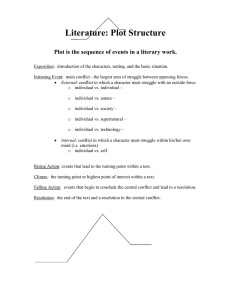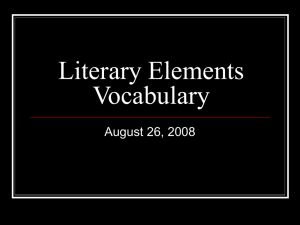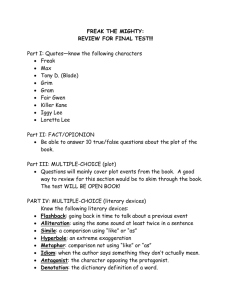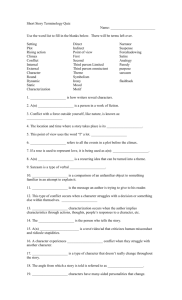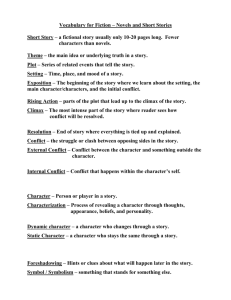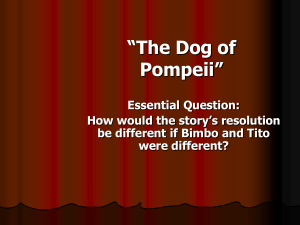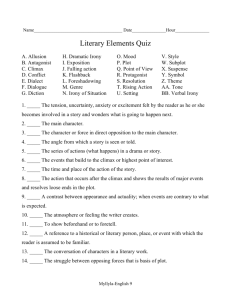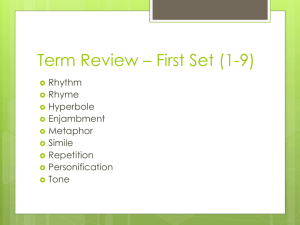Literature Terms
advertisement
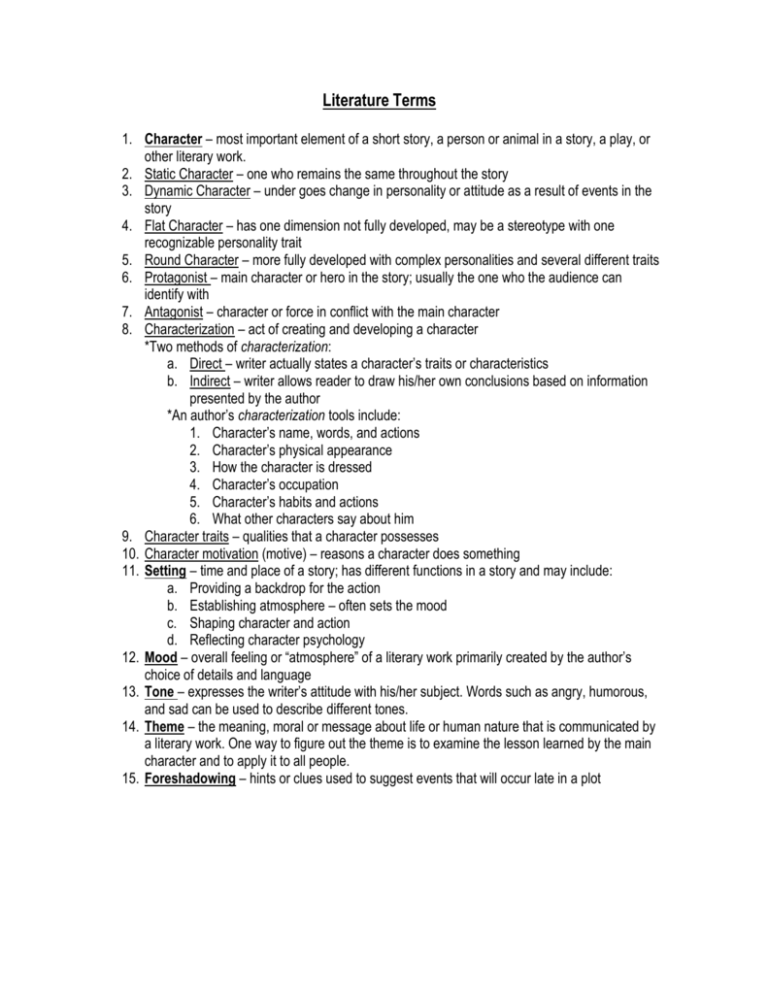
Literature Terms 1. Character – most important element of a short story, a person or animal in a story, a play, or other literary work. 2. Static Character – one who remains the same throughout the story 3. Dynamic Character – under goes change in personality or attitude as a result of events in the story 4. Flat Character – has one dimension not fully developed, may be a stereotype with one recognizable personality trait 5. Round Character – more fully developed with complex personalities and several different traits 6. Protagonist – main character or hero in the story; usually the one who the audience can identify with 7. Antagonist – character or force in conflict with the main character 8. Characterization – act of creating and developing a character *Two methods of characterization: a. Direct – writer actually states a character’s traits or characteristics b. Indirect – writer allows reader to draw his/her own conclusions based on information presented by the author *An author’s characterization tools include: 1. Character’s name, words, and actions 2. Character’s physical appearance 3. How the character is dressed 4. Character’s occupation 5. Character’s habits and actions 6. What other characters say about him 9. Character traits – qualities that a character possesses 10. Character motivation (motive) – reasons a character does something 11. Setting – time and place of a story; has different functions in a story and may include: a. Providing a backdrop for the action b. Establishing atmosphere – often sets the mood c. Shaping character and action d. Reflecting character psychology 12. Mood – overall feeling or “atmosphere” of a literary work primarily created by the author’s choice of details and language 13. Tone – expresses the writer’s attitude with his/her subject. Words such as angry, humorous, and sad can be used to describe different tones. 14. Theme – the meaning, moral or message about life or human nature that is communicated by a literary work. One way to figure out the theme is to examine the lesson learned by the main character and to apply it to all people. 15. Foreshadowing – hints or clues used to suggest events that will occur late in a plot 16. Plot – plan of action or series of events in a story. The five parts of a plot structure are: a. Exposition – beginning; introduces the main character and the conflict, also establishes setting b. Rising Action – conflict develops as the characters struggle to achieve a goal or to solve a problem. As the conflict continues, the reader becomes more and more interested in the story c. Climax – interest in the story’s events increases until the story reaches its climax, the most exciting event or the most dramatic moment. The climax marks the story’s turning point. d. Falling Action – events after the climax focus on how the story’s conflict is resolved e. Resolution – conclusion, final event, often ties together all loose ends. All questions are answered and the final conflict is settled. 17. Conflict – struggle between opposing characters or opposing forces; component which drives the plot. There are two types of conflict: a. External conflict – a character struggles with an outside force, which may be another character, society as a whole or a natural force. b. Internal Conflict – takes place within a character’s mind. It is a struggle between opposing needs, desires, or emotions *There are 4 categories of conflict: 1. Character VS Character – involves conflicts between people such as family, trouble with a bully, difficulties in romance, etc. 2. Character VS Society – involves conflict between an individual and larger groups such as the outsider in a strange culture, a poor character’s struggle to “make it” in the business world 3. Character VS Nature – involves conflict between individual and the natural world such as fighting a powerful hurricane, surviving after a plane crash in the desert 4. Character VS Self – involves character’s psychological conflicts with themselves such as overcoming a drug habit or alcoholism, grieving over the loss of a loved one 18. Flashback – an interruption in the present action of a plot to show events that happened at an earlier time 19. Point of View – position from which the story is told; who is telling the story; there are 2 types; a. First Person Point of View – uses the pronoun “I”, storyteller is both narrator and participant b. Third Person Point of View – uses the pronouns he/she; events of the story are reported by an outsider who witnessed or knew about the events but did not participate in them
